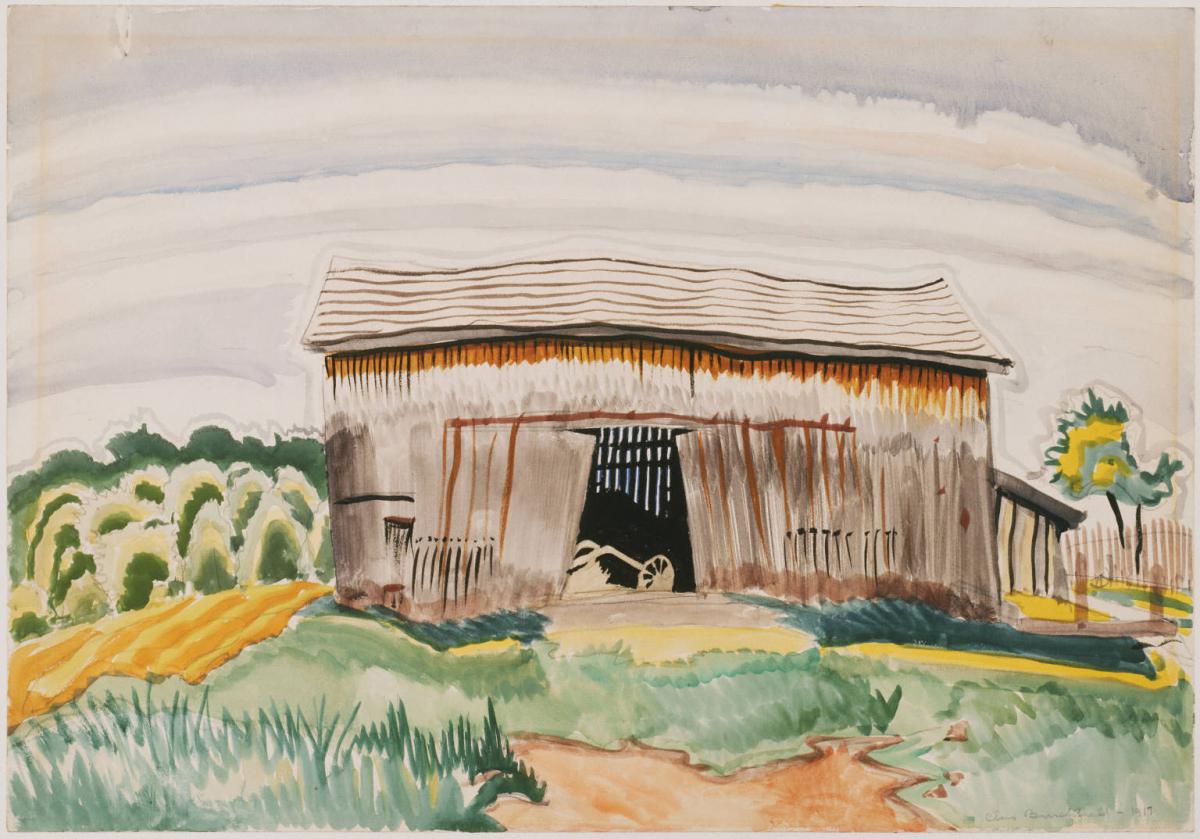Barn
Charles Burchfield ( 1917 )

In 1917, Charles Burchfield began to expand upon his imagery, turning his attention to what Edward Hopper characterized in Burchfield’s work as “our native architecture with its hideous beauty.” Whether he painted storefronts, houses, or utilitarian structures, Burchfield attempted to suggest something about the people who used them. The buildings were often brought to life by exaggerating key features.
Barn was inspired by a building Burchfield saw one day while traveling along Painter Road in Salem, Ohio, just west of Bentley’s Woods. It is one of his first works to prominently feature a barn, a characteristic subject in his middle period, the picture is eerie in its silence. Although the time of year was not recorded, the clear light and golden furrows of the plowed field to the left suggest a warm, sunny day in late spring or early summer. Within the barn, a piece of farm equipment—likely the plow used to work the nearby fields—is a ghostly presence that haunts the dark interior.
This painting is remarkably restrained in its respect for the actual appearance of the building. Rather than transforming the barn’s facade into an animated face made up of windows and doorways, Burchfield relied more on composition and fine detail to convey the character of the place. Because the composition is nearly symmetrical with its main motif close to the center, the painting appears very still. It is enlivened subtly by features of the building: the doors hang crookedly, light passes through the planks of its back wall, and the roof curls near the sides, probably the result of its exposure to the elements. In contrast, the landscape details, glowing with light and color, convey renewal. The sky, painted in pale, gently arching streaks on a very wet surface, suggests rising humid air and a gradual clearing of the weather. It is a manifestation of his quest to show beauty and life in unexpected places.